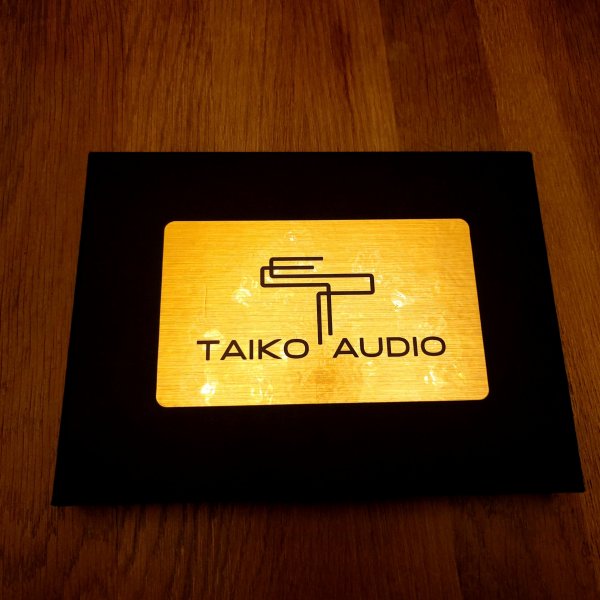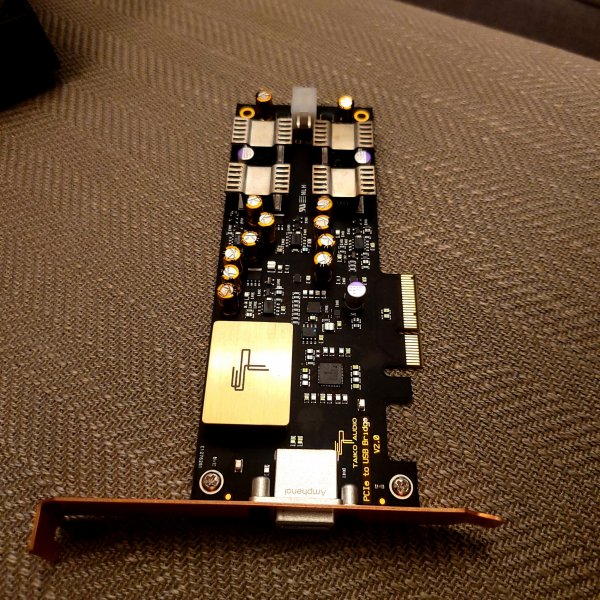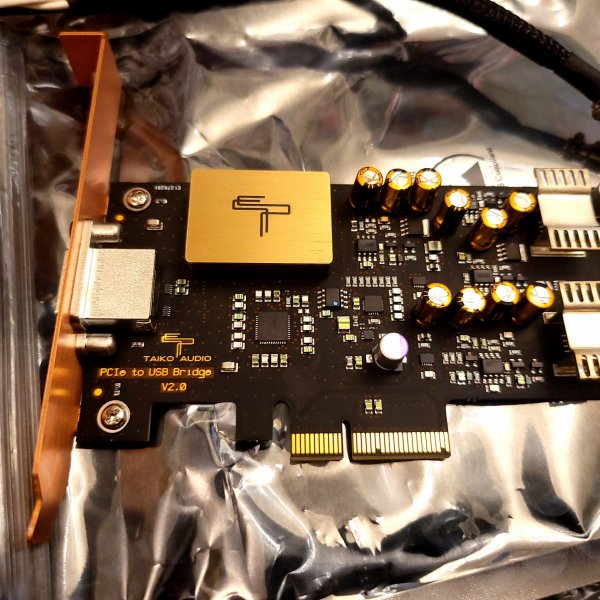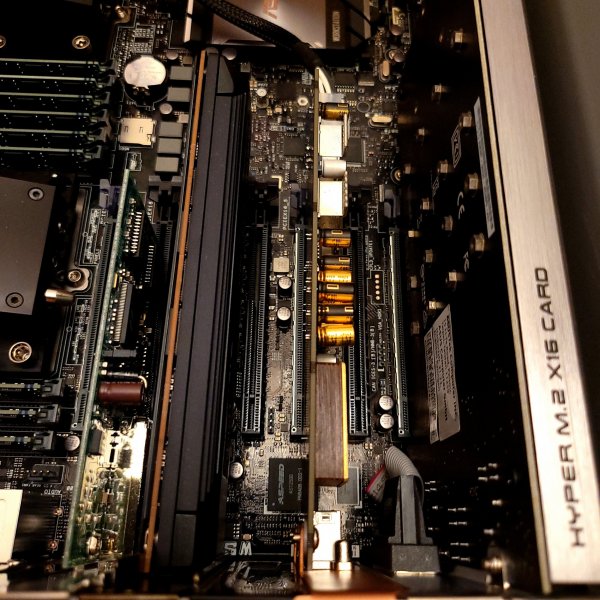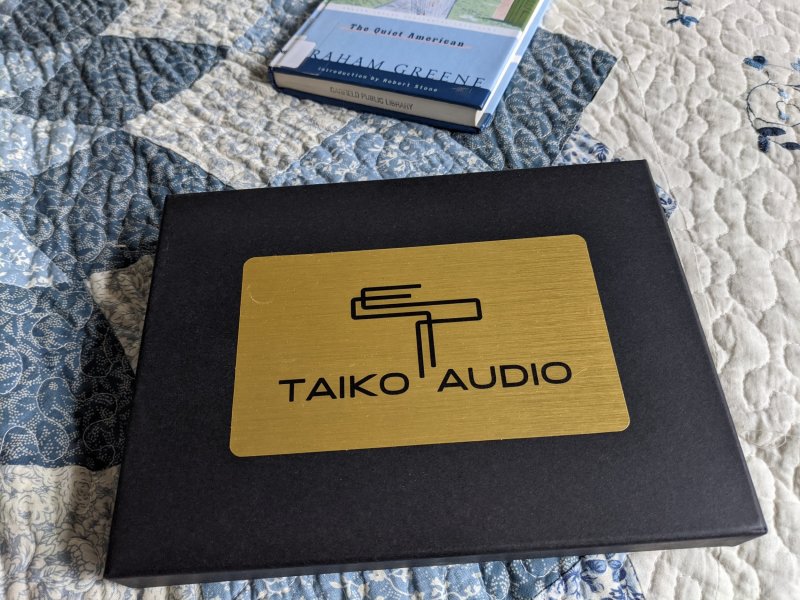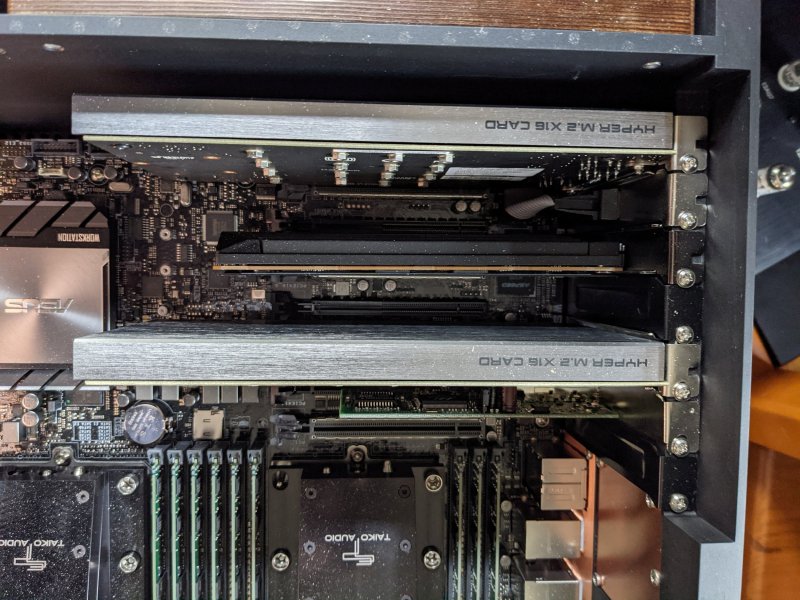Here’s my two cents on the USB board. I installed it Monday morning (2 days ago) and simply let it play. Sat down for a listen after a few hours and walked away intentionally. (Nothing relevant ever really comes from listening to any new piece of gear with less than 24 hours on it!). Listened seriously last night. All I can say is WOWZA. I was just mesmerized. The difference the USB board makes is nothing short of phenomenal. It's like you thought you knew what good digital sounded like before, only to have the rules entirely re-written. Really stunning. Here are 3 things that seemed noteworthy to me:
1) The degree of improvement in definition is remarkable throughout the frequency range. There is newfound reproduction clarity regardless of source material. It's more than just removing the proverbial window pane. A new level of transparency is obvious.
2) Improved signal/noise results in quieter backgrounds. I have no idea how this happens with processing 1’s and 0’s , but the results are obvious. I think this is what largely underpins the improved perception of soundstage features such as increased depth, width, etc.
3) Perhaps the most profound change for me is an apparent improvement in dynamic range. There are moments on some material that I know well, particularly on some warp 9 recording, that always get to a point at which the system tends to collapse. The sound just seems to say “I’m running out of steam” so just go home. The surprise is that this compression now seems it's not just about power. This concept is now being revisited and re-evaluated more so than I would have expected just from a change in a digital input board. What I'm hearing is that through the new USB board, the overall distortion product is simply lower and perhaps this is what allows the dynamics to have greater reach and realism than I have appreciated previously? It seems to me like there's an analogy to cartridge mistracking here. No amount of power can save you from the distortion that occurs when a cartridge mistracks. Well, with digital, something seems to occur at the fff range that facilitates a similarly annoying collapse of the soundfield. Obviously it's not the same as cartridge mistracking but perhaps is some sort of analogous digital distortion or grunge (digital mistracking? other?) that occurs as a function of gain that thwarts dynamics at the upper end? I have no idea, but moreover, never really appreciated its contribution as much previously because it was always there so I assumed it was part of the territory. Well, whatever it is, the USB board certainly reduces it tremendously.
If my guess is correct some more time on the board will be sonically beneficial as others have noted. I’m looking forward to it. And to think- I haven't even explored TAS fully! However, in all honesty, Roon is so impressive that I have to find a reason NOT to use it.
1) The degree of improvement in definition is remarkable throughout the frequency range. There is newfound reproduction clarity regardless of source material. It's more than just removing the proverbial window pane. A new level of transparency is obvious.
2) Improved signal/noise results in quieter backgrounds. I have no idea how this happens with processing 1’s and 0’s , but the results are obvious. I think this is what largely underpins the improved perception of soundstage features such as increased depth, width, etc.
3) Perhaps the most profound change for me is an apparent improvement in dynamic range. There are moments on some material that I know well, particularly on some warp 9 recording, that always get to a point at which the system tends to collapse. The sound just seems to say “I’m running out of steam” so just go home. The surprise is that this compression now seems it's not just about power. This concept is now being revisited and re-evaluated more so than I would have expected just from a change in a digital input board. What I'm hearing is that through the new USB board, the overall distortion product is simply lower and perhaps this is what allows the dynamics to have greater reach and realism than I have appreciated previously? It seems to me like there's an analogy to cartridge mistracking here. No amount of power can save you from the distortion that occurs when a cartridge mistracks. Well, with digital, something seems to occur at the fff range that facilitates a similarly annoying collapse of the soundfield. Obviously it's not the same as cartridge mistracking but perhaps is some sort of analogous digital distortion or grunge (digital mistracking? other?) that occurs as a function of gain that thwarts dynamics at the upper end? I have no idea, but moreover, never really appreciated its contribution as much previously because it was always there so I assumed it was part of the territory. Well, whatever it is, the USB board certainly reduces it tremendously.
If my guess is correct some more time on the board will be sonically beneficial as others have noted. I’m looking forward to it. And to think- I haven't even explored TAS fully! However, in all honesty, Roon is so impressive that I have to find a reason NOT to use it.
Last edited:



